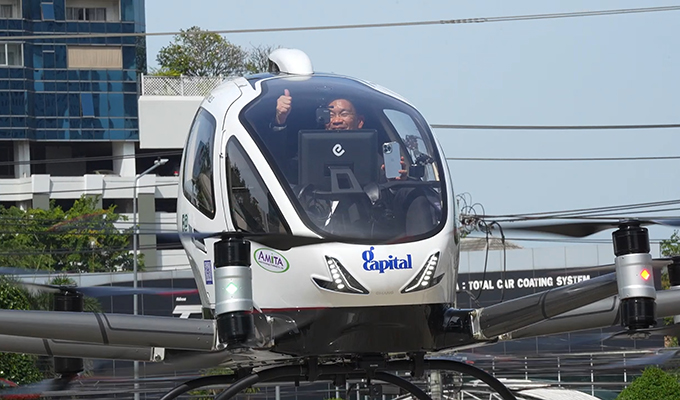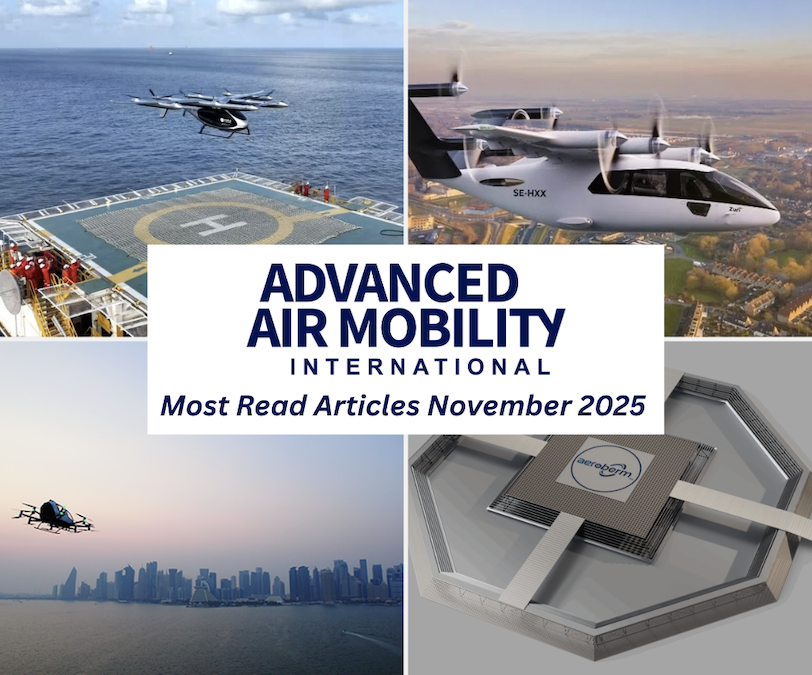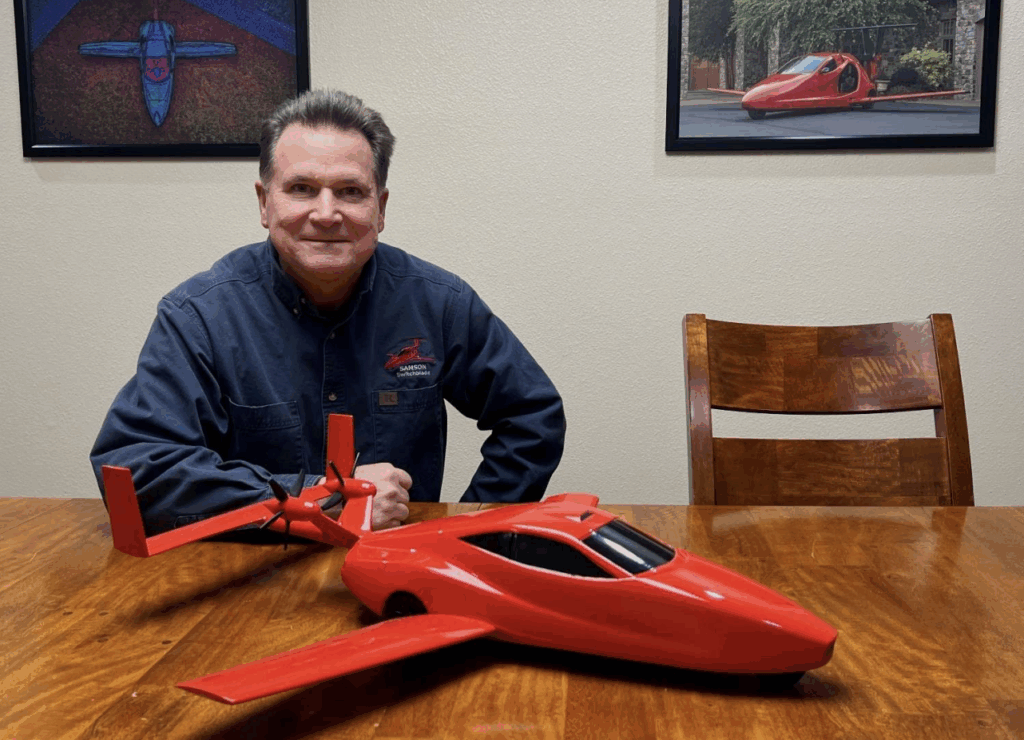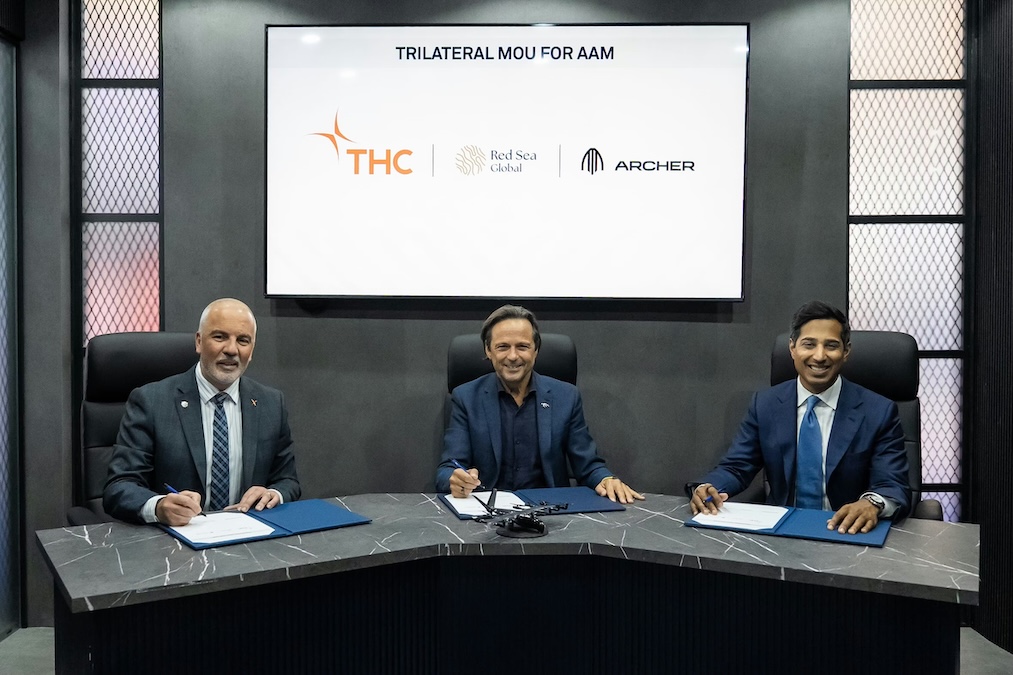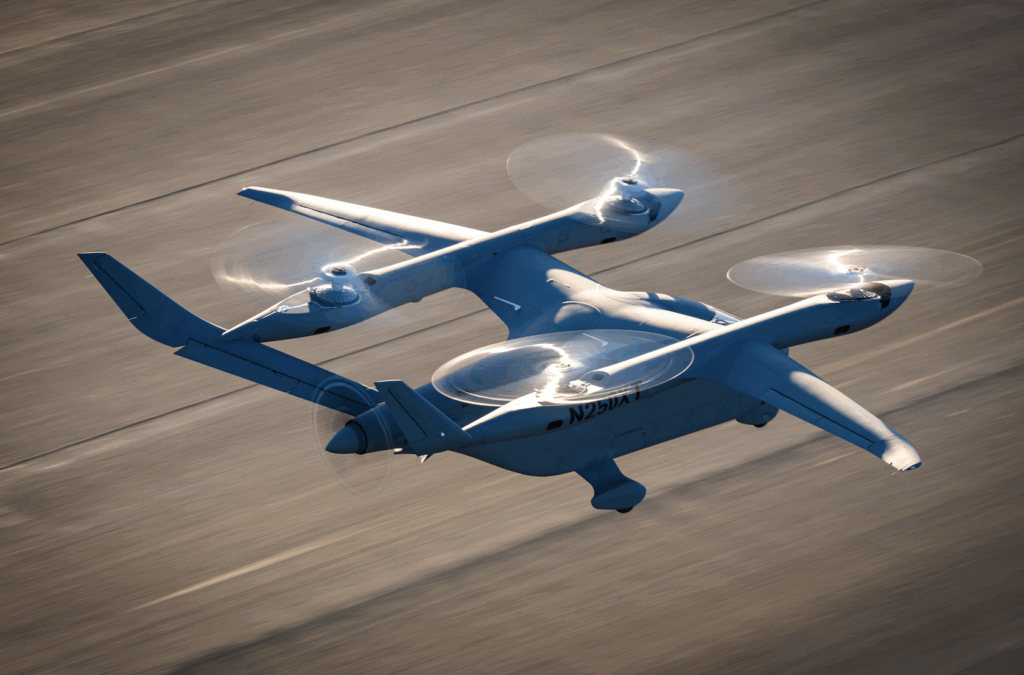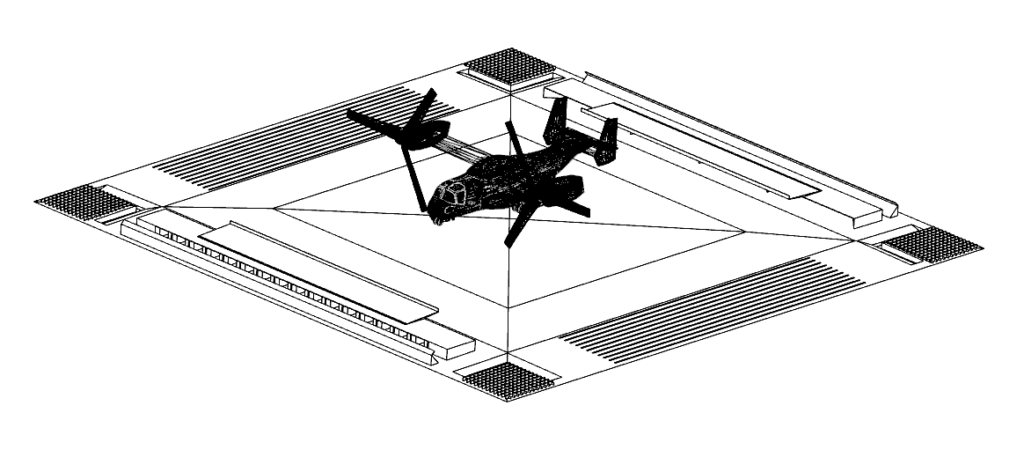
Peniel Infrastructure is tackling one of the main barriers to urban air mobility (UAM), the challenge of outwash, powerful airflows generated during eVTOL takeoff and landing that make vertiport development in dense urban environments exceedingly difficult.
Recent FAA research and regulatory updates underscore just how serious the problem is. In Engineering Brief 105A (EB105a), the FAA defines the Downwash/Outwash Caution Area (DCA) as any space where outwash wind velocity can meet or exceed 34.5mph. However, both the FAA’s own eVTOL Downwash and Outwash Surveys and independent academic studies have confirmed that compliance with current safety-area requirements is not enough. Real-world testing shows that outwash spreads farther and with greater intensity than anticipated, surpassing comfort and safety standards for nearby structures and bystanders.
Even the FAA’s latest EB105a recognizes that the DCA must extend well beyond the nominal safety zone, often to the point where developing economically viable urban vertiports becomes all but impossible without breakthrough solutions. The result is that urban vertiports remain largely aspirational, constrained by land availability and prohibitive costs.
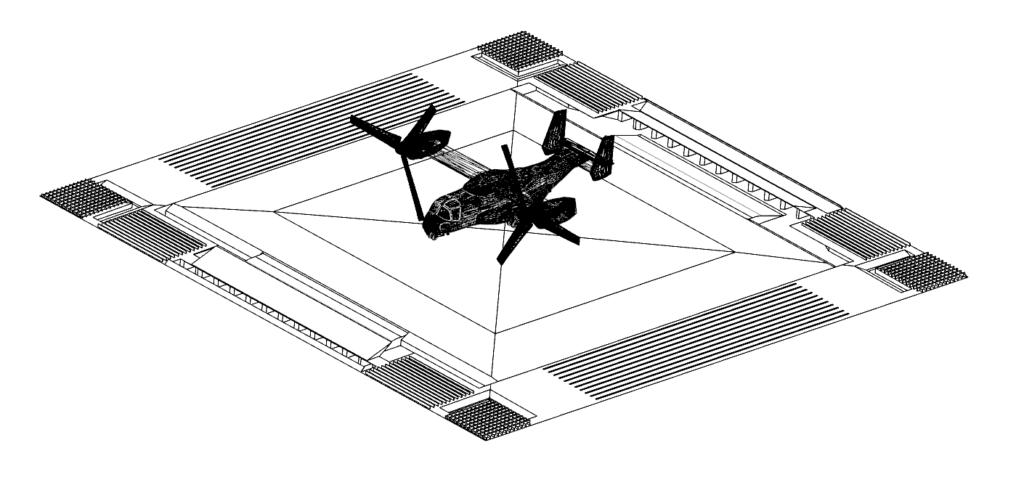
sketchfab of author manilov.ap.
Peniel Infrastructure directly addresses this industry bottleneck with its modular outwash mitigation technology, engineered to confine hazardous outwash within the regulated safety area and redefine what is possible in vertiport planning. The system is available in two distinct configurations to meet the needs of both retrofit and new-build projects:
- Peniel Deflector: Inspired by traditional blast deflectors but reimagined for the eVTOL era, this solution is compact, standing less than 80 cm high, and strategically positioned along the aircraft’s longitudinal axis based on outwash characteristics of fixed-wing and tiltrotor eVTOL designs. This configuration contains hazardous outwash while keeping lateral sides clear, ensuring unobstructed access for aircraft and ground personnel. Its modular design enables rapid deployment, with on-site assembly achievable in less than a day, compared to the multiple days typically required for conventional systems.
- Peniel Underground: Designed primarily for new vertiports and vertihubs, this system places most of the mitigation structure below ground, eliminating visual obstructions for pilots and preserving a seamless landing and takeoff experience. Like the Deflector, it maintains rigorous safety performance and is protected under U.S. Provisional Patent No. 63/829,111.
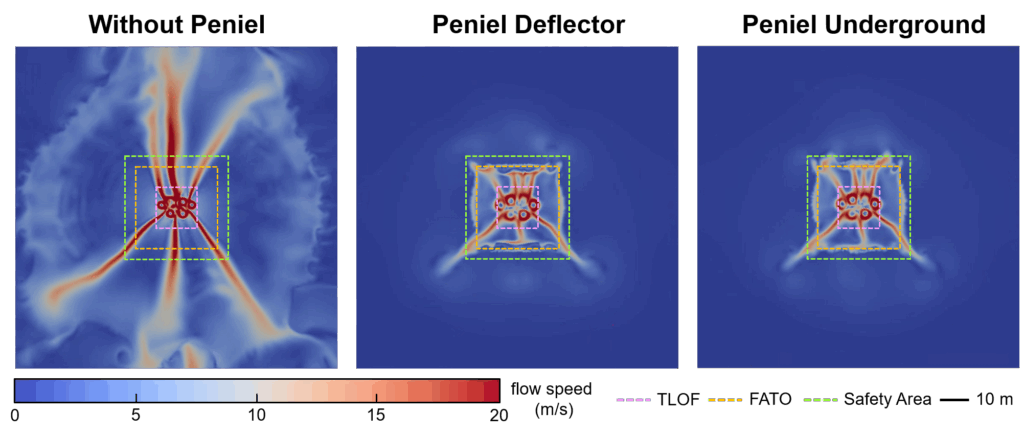
Both solutions have undergone advanced computational fluid dynamics (CFD) analysis, validating their ability to contain hazardous outwash (≥34.5 mph) within designated safety areas, even under demanding scenarios such as a Joby S4-like eVTOL hovering at 10 feet at its maximum 7,000-pound takeoff weight. By mitigating outwash effectively, Peniel’s systems reduce vertiport land requirements by up to 79% compared to layouts dictated solely by conventional buffer zones. Their modular architecture ensures adaptability to diverse site conditions and compatibility with a wide range of eVTOL platforms.
With Peniel Infrastructure’s solutions, vertiports can be built where they were once impractical, side-by-side like parking lots, on rooftops, within private properties, and across commercial or public sites. This flexibility supports high-density passenger air transport and drone cargo operations, accelerating the path toward scalable, economically viable UAM networks in cities worldwide.


